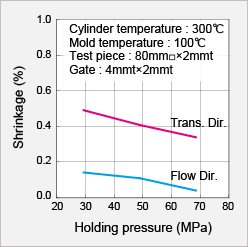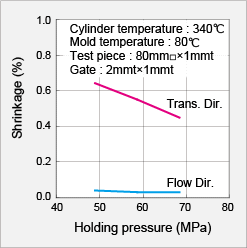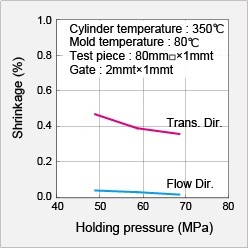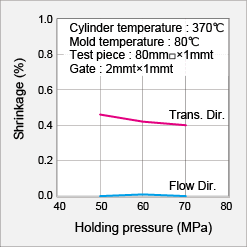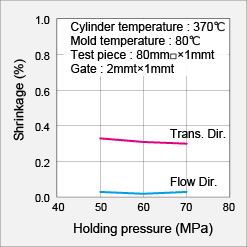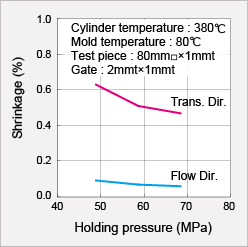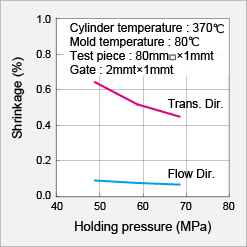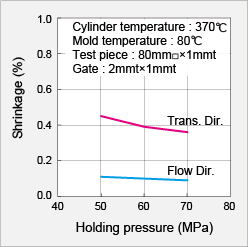Home > Technical Support > Molding Technology > Molding Technology for LAPEROS(R) LCP
Properties - Molding Shrinkage
6. Molding Properties 6.2 Mold Shrinkage Typical mold shrinkage of LAPEROS® LCP grades are shown in Table 6-1 and Fig. 6-3 to Fig. 6-10. Because shrinkage rates are generally small, there is an advantage in easily ensuring dimensional accuracy. Shrinkage rates especially in the flow direction are very small and those in the transverse direction show slightly larger values. If the molded product shape is complicated and the flow direction is random, a practical method to determine cavity dimensions is by using the intermediate value in the both directions and regarding it as the uniform shrinkage rate. Those values shown in Table 6-1 and Fig. 6-3 to Fig. 6-10 are applicable to simple shapes, so complicated shapes may show slightly different values. However, because of the low absolute value of mold shrinkage, it is assumed that there will be little influence upon dimensional accuracy. When the tolerance of dimensional accuracy is very critical, a test mold may be made to actually measure the true shrinkage of a particular product, or it may be necessary to provide allowances for the cavity dimensions to the adjustable side of the assumed mold shrinkage when making a mold for commercial production.
Table 6-1 Mold Shrinkage Rates of LAPEROS® LCP Grades( Unit : % )
* 80 mm x 80 mm x 1 mmt flat plate, side gate 2 mm x 1 mm, injection pressure 60 MPa
|


